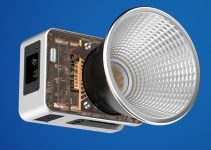Color grading is the core that DaVinci Resolve was built on and surprisingly Blackmagic Design is still finding ways to add new tools to make that experience even better and allow editors to do new things.
The recent release of version 17 brought us the Color Warper which takes your basic color and contrast curves to a new level but doesn’t necessarily bring us anything brand new. With so many tools already at our disposal, why should we learn a new one?
Alex Jordan, the familiar face of Learn Color Grading, has the answer for why we should check out the Color Warper tool in Resolve 17. To give a little bit of a spoiler, it is that using this tool can be a faster substitute for a bunch of others.
Jordan points out that, generally speaking, new tools in DaVinci Resolve bring new functionality. The Color Warper differs in that it is really just a new way to handle things we have been able to do for a while already.
There were already tools to adjust hue, brightness, saturation, etc. so what exactly does the Color Warper bring to the table?
Well, Jordan states it simply that the Color Warper allows you to select a single point and control both the hue and saturation.
It means you can control two things at the same time, which will be much faster than using two separate panels. Plus, if it is faster you are more likely to try new things and maybe do something better.
Before, these types of color shifts and adjustments would be handled in the Curves panel. Jordan gives a nice demonstration. Looking at a shot with a red pot he heads to the Hue Vs Hue panel in Curves, selects the red areas and slides it around to change the colors.
To change the saturation you’ll have to move to the Hue Vs Saturation panel. For brightness it’s yet another panel in Hue Vs Luminance.
Think about how you might often want to tweak one of these settings and then follow that up with a change to another setting. Cutting down on switching panels would be nice.
Enter the Color Warper.
Clicking a single red point you can see he is able to adjust the direction to adjust both the saturation and hue of the red pot. Plus, on the same panel there is a luma control for adjusting brightness.
All three of those settings are quickly adjusted in a single panel. Convinced yet?
Another time-saving function of the Color Warper compared to Curves is how the colors are selected. In curves each panel will require actually going and selecting the color you want to affect.
Moving back to the warper you can pick and choose the color by simply picking the appropriate point.
You should use the Color Warper tool because it will speed up your color grading. That allows you to not only do more and work more efficiently, it allows you to experiment and try new things.
Are you going to start using the Color Warper now?
[source: Learn Color Grading]
Disclaimer: As an Amazon Associate partner and participant in B&H and Adorama Affiliate programmes, we earn a small comission from each purchase made through the affiliate links listed above at no additional cost to you.




